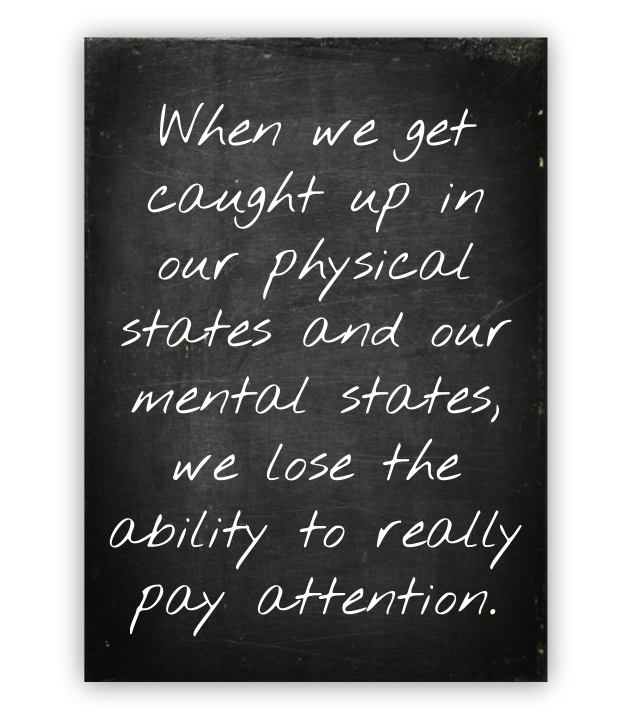
You read about it everywhere. Mindfulness for schools, mindful games for kids, even dozens of mindfulness apps (I like Headspace and Waking Up). It’s easy to lose the intention of mindfulness practice and instead focus, or worse yet, obsess about the potential benefits. When will I experience the stress reduction? The boost to working memory? The emotional control? The balance?
This is my attempt to cut through the noise and drill down to the core of what mindfulness means for me. Note: I’m a novice practitioner, and no expert. Here is a great (and short) piece from ABC anchor Dan Harris, a long-time practicing meditator who wrote the best-selling book, “10% Happier.”
What is it, and what’s the point?
- In Eastern cultures, mindfulness practice has one clear purpose: to deconstruct the “self”, the concept of the little person, resting in our heads just behind our eyes, that guides us through life. We deconstruct the “self” so that we can pay attention more clearly.
- At first, that seems like a contradiction. How can we pay attention better without a “self?” It actually makes a lot of sense. The “self” is the one that gets tied up with the physical sensations like nervousness, fear, sadness, even happiness. The “self” is also entangled with intangible feelings and thoughts. When we get caught up in our physical states and our mental states, we lose the ability to really pay attention.
- So deconstructing the self helps us see the world more clearly. Said another way:
- “You” are not your body. When you feel pain, or positive sensations, these don’t define “you.”
- “You” are not your emotions. When you feel anger, sadness, despair, these don’t define “you.”
- But “you” are also not your thoughts. This is the most difficult part for me, recognizing my thoughts as objects popping up and passing through my attention, not as a definition of “self.”

- And it’s this deconstruction of “self” that produces all of the positive outcomes that you’ve heard about: reduced stress, better memory, emotional control, and balance. Because when “you” are not defined by how your body feels, your emotional state, or even your thoughts, you are free to let go of those states and better pay attention to the world around you.
What it isn’t?
- All this DOESN’T mean that you won’t feel bodily sensations, or emotions, or have thoughts. Of course, all of those states happen thousands of times per day. The point is never to clear the mind of thoughts or feelings. Rather, it’s to recognize them for what they are, which along with meditative practice reduces their half-life considerably.
- Imagine all of the damage that is done when feeling anger for one hour. I yell at my wife, I miss a moment with my kids, I don’t fully understand what I’m reading, etc. (or worse). What if I felt that anger not for an hour, but for 30 seconds? How much more present would I be? How much better would the results of my life be? How much more balanced would I be? This is the power of deconstructing the self and experiencing the world more clearly.
- The good news is that if any of this is interesting to you, practice can begin with a few minutes a day. There is a reason it’s called meditative practice, though. For many of us (hand raised!) it can take lots and lots of practice before you notice even small changes in your awareness.


